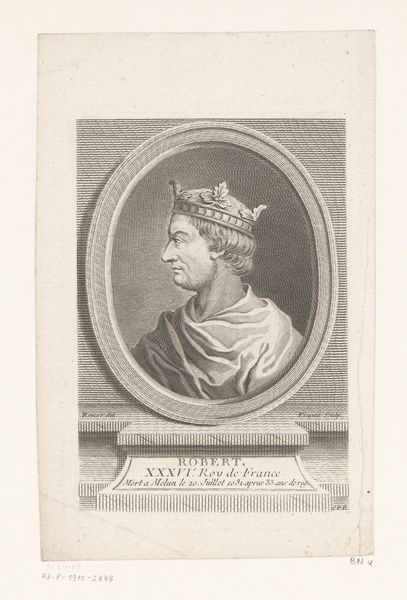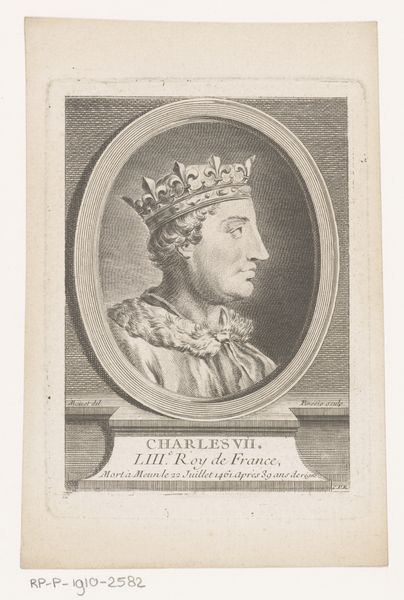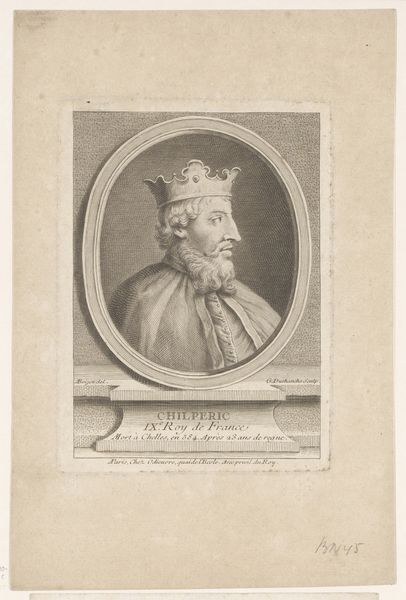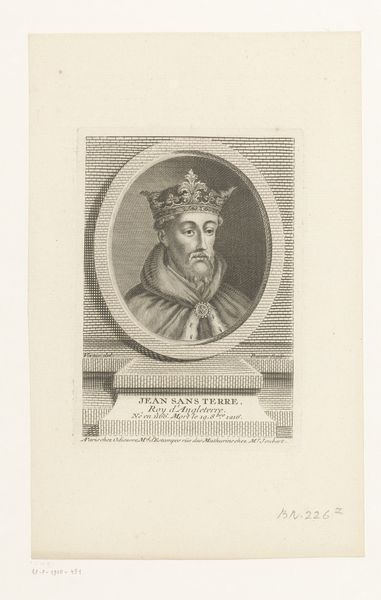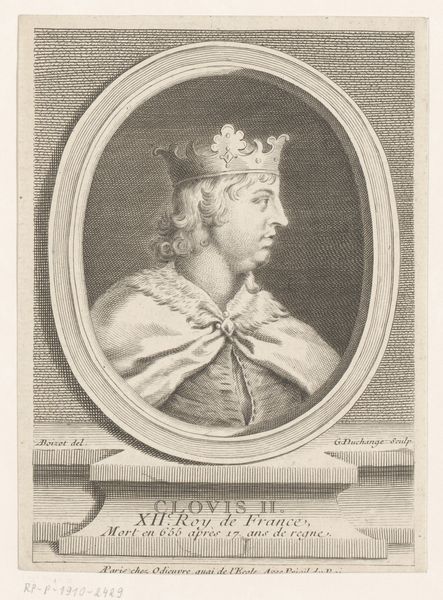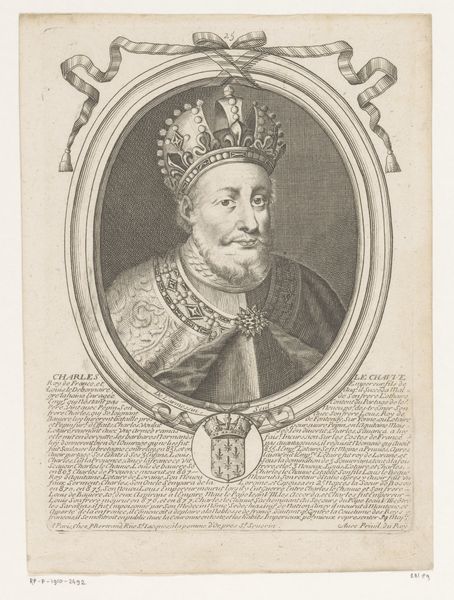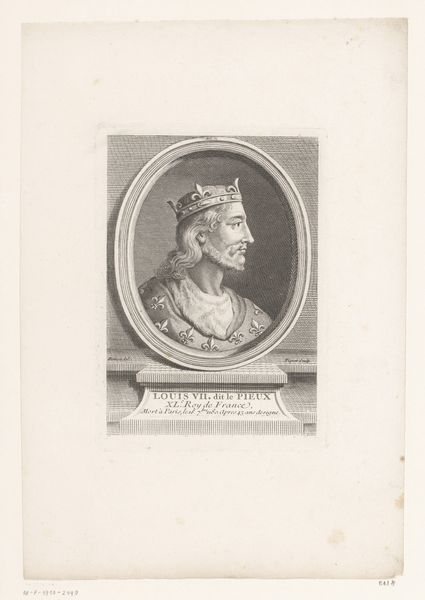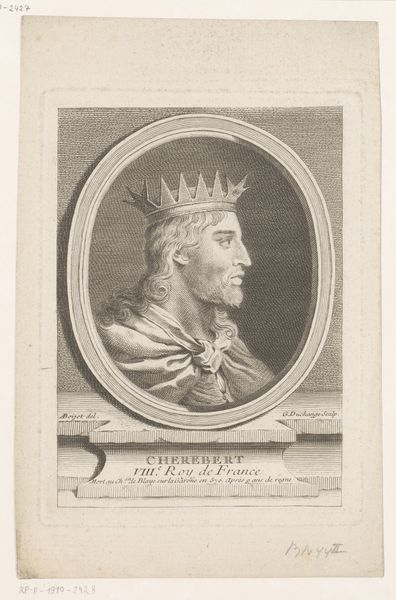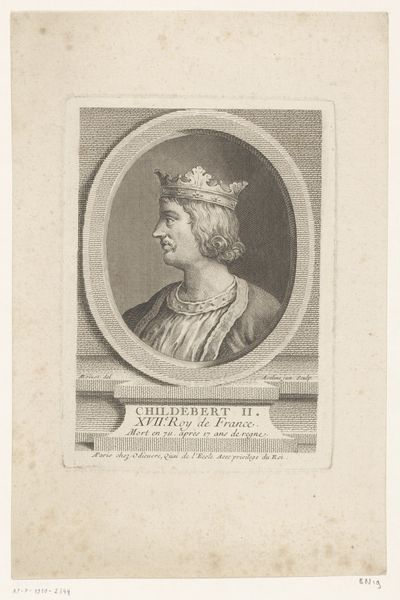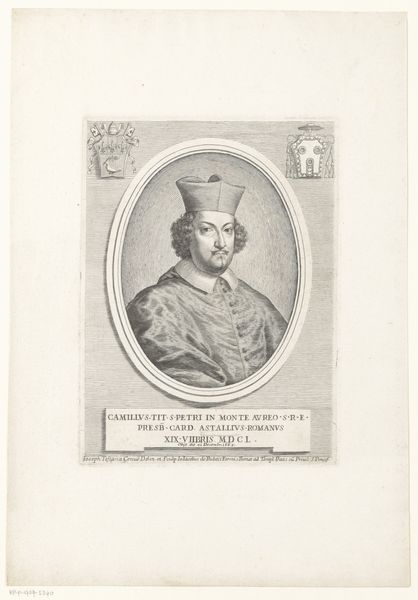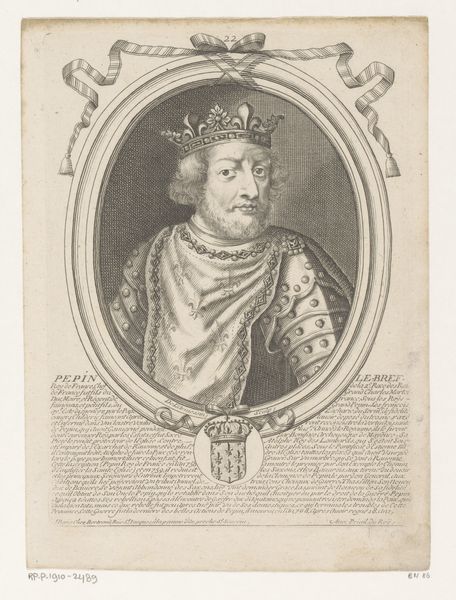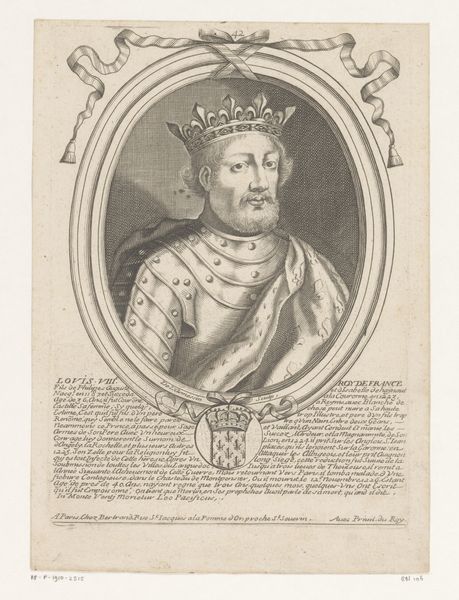
engraving
#
portrait
#
medieval
#
old engraving style
#
history-painting
#
engraving
Dimensions: height 151 mm, width 112 mm
Copyright: Rijks Museum: Open Domain
Curator: Here we have François Antoine Aveline's "Portret van Chlotharius III," created sometime between 1728 and 1780 using engraving techniques. Editor: Hmm, even though it depicts royalty, it feels rather understated, almost melancholy, wouldn't you say? Curator: That’s interesting! Tell me more... Editor: The figure seems almost lost in contemplation, and the monochrome engraving lends a certain gravity. It's not a triumphant king, but someone burdened by...something. Curator: Indeed. Aveline's expertise in engraving brings out very refined details—look at the intricate cross-hatching that defines the contours of Clothar's face and clothing. It provides a sense of depth and texture, even in this monochrome palette. The use of the oval frame is typical for portraits of the time, hearkening back to the medallions of classical antiquity, containing the historical figure. Editor: Absolutely. I love how that framework plays against the sharp linearity of the crosshatching. It's a very considered composition, that balances simplicity of form and line with intense detail. Curator: There’s also the choice of medium itself. Engraving allows for a kind of precision that aligns perfectly with portraying historical figures—lending a sense of enduring permanence and meticulousness. Aveline has certainly immortalized the figure as well as his reputation through carefully considered aesthetics. Editor: Precisely. Each etched line almost seems to pronounce Clothar’s importance as well as the solemn nature of representation in that period. It brings to mind, for me, not only the individual, but all the other individuals within that timeframe. It almost seems as if he were not alone. It has weight, significance, meaning... Curator: It really prompts one to consider the weight of history—the ways in which figures of power are remembered and interpreted, not just as rulers, but as individuals marked by their own mortality. Editor: Very true... And the details invite further investigation: was it always this restrained in the depiction, did something influence its overall look and feel, how was its historical presence altered when its own visual rendering took place? It makes me ask more, even without words it brings to me some consideration.
Comments
No comments
Be the first to comment and join the conversation on the ultimate creative platform.
